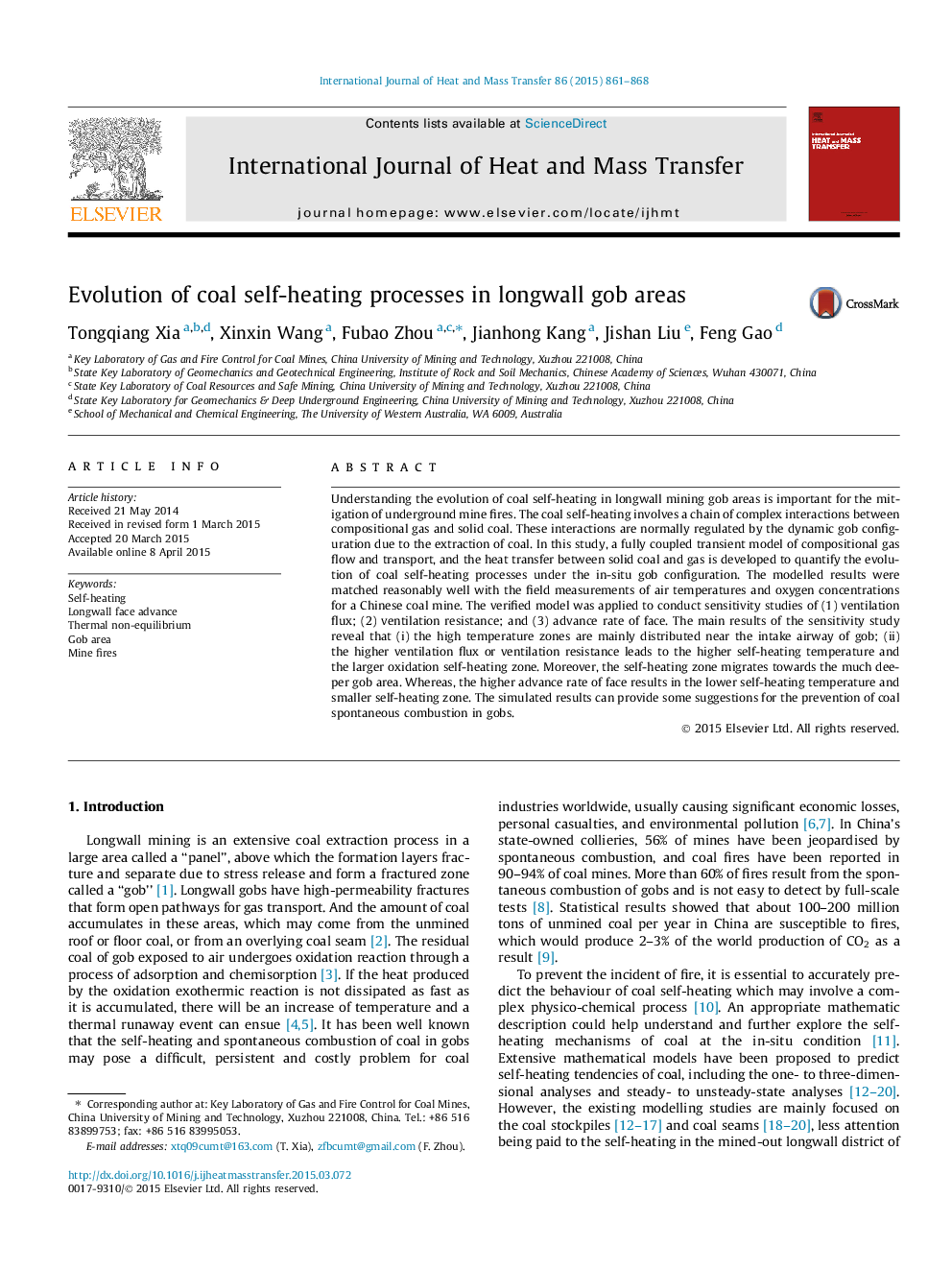| Article ID | Journal | Published Year | Pages | File Type |
|---|---|---|---|---|
| 656787 | International Journal of Heat and Mass Transfer | 2015 | 8 Pages |
Understanding the evolution of coal self-heating in longwall mining gob areas is important for the mitigation of underground mine fires. The coal self-heating involves a chain of complex interactions between compositional gas and solid coal. These interactions are normally regulated by the dynamic gob configuration due to the extraction of coal. In this study, a fully coupled transient model of compositional gas flow and transport, and the heat transfer between solid coal and gas is developed to quantify the evolution of coal self-heating processes under the in-situ gob configuration. The modelled results were matched reasonably well with the field measurements of air temperatures and oxygen concentrations for a Chinese coal mine. The verified model was applied to conduct sensitivity studies of (1) ventilation flux; (2) ventilation resistance; and (3) advance rate of face. The main results of the sensitivity study reveal that (i) the high temperature zones are mainly distributed near the intake airway of gob; (ii) the higher ventilation flux or ventilation resistance leads to the higher self-heating temperature and the larger oxidation self-heating zone. Moreover, the self-heating zone migrates towards the much deeper gob area. Whereas, the higher advance rate of face results in the lower self-heating temperature and smaller self-heating zone. The simulated results can provide some suggestions for the prevention of coal spontaneous combustion in gobs.
